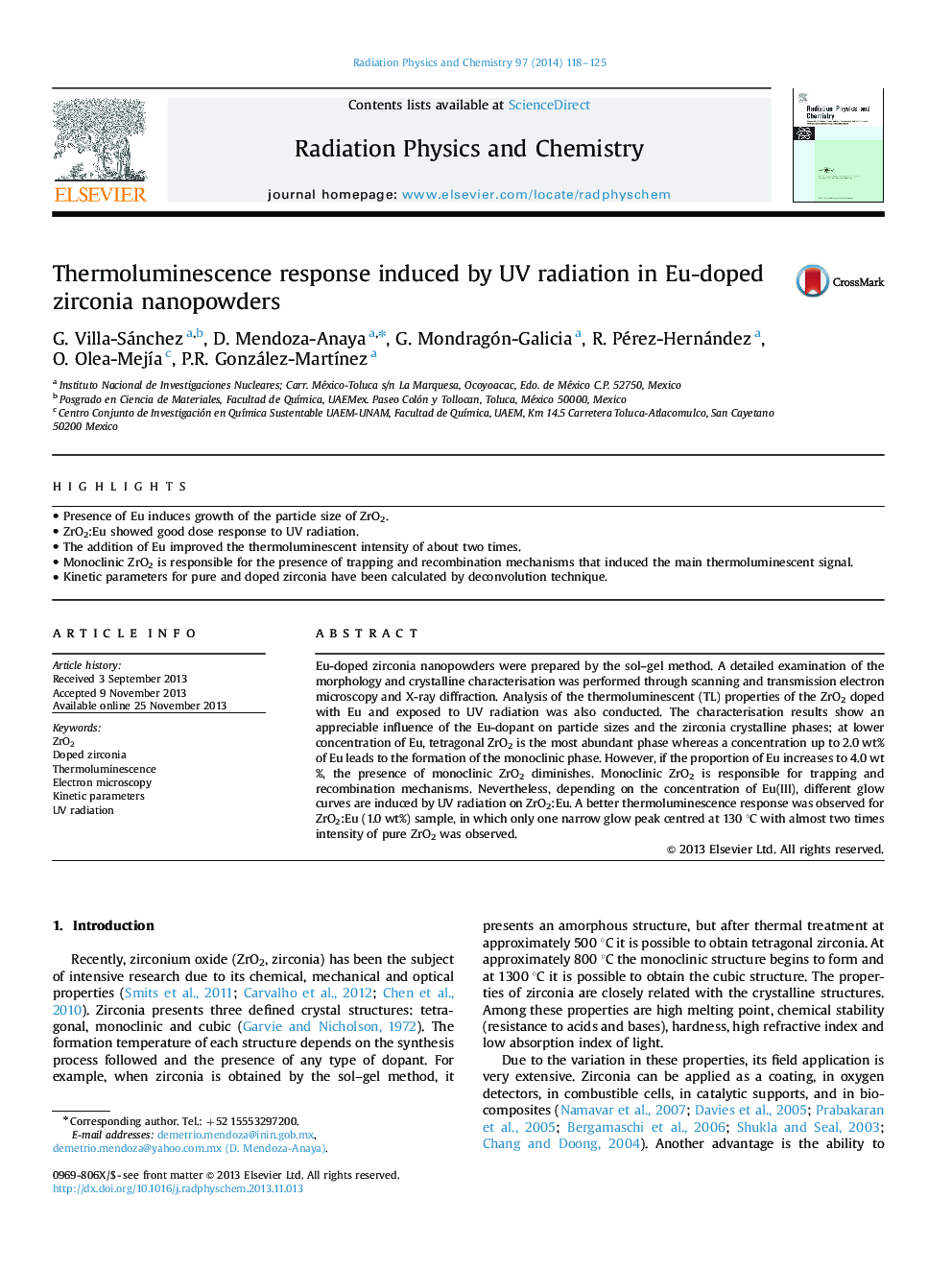| Article ID | Journal | Published Year | Pages | File Type |
|---|---|---|---|---|
| 1886143 | Radiation Physics and Chemistry | 2014 | 8 Pages |
•Presence of Eu induces growth of the particle size of ZrO2.•ZrO2:Eu showed good dose response to UV radiation.•The addition of Eu improved the thermoluminescent intensity of about two times.•Monoclinic ZrO2 is responsible for the presence of trapping and recombination mechanisms that induced the main thermoluminescent signal.•Kinetic parameters for pure and doped zirconia have been calculated by deconvolution technique.
Eu-doped zirconia nanopowders were prepared by the sol–gel method. A detailed examination of the morphology and crystalline characterisation was performed through scanning and transmission electron microscopy and X-ray diffraction. Analysis of the thermoluminescent (TL) properties of the ZrO2 doped with Eu and exposed to UV radiation was also conducted. The characterisation results show an appreciable influence of the Eu-dopant on particle sizes and the zirconia crystalline phases; at lower concentration of Eu, tetragonal ZrO2 is the most abundant phase whereas a concentration up to 2.0 wt% of Eu leads to the formation of the monoclinic phase. However, if the proportion of Eu increases to 4.0 wt%, the presence of monoclinic ZrO2 diminishes. Monoclinic ZrO2 is responsible for trapping and recombination mechanisms. Nevertheless, depending on the concentration of Eu(III), different glow curves are induced by UV radiation on ZrO2:Eu. A better thermoluminescence response was observed for ZrO2:Eu (1.0 wt%) sample, in which only one narrow glow peak centred at 130 °C with almost two times intensity of pure ZrO2 was observed.
